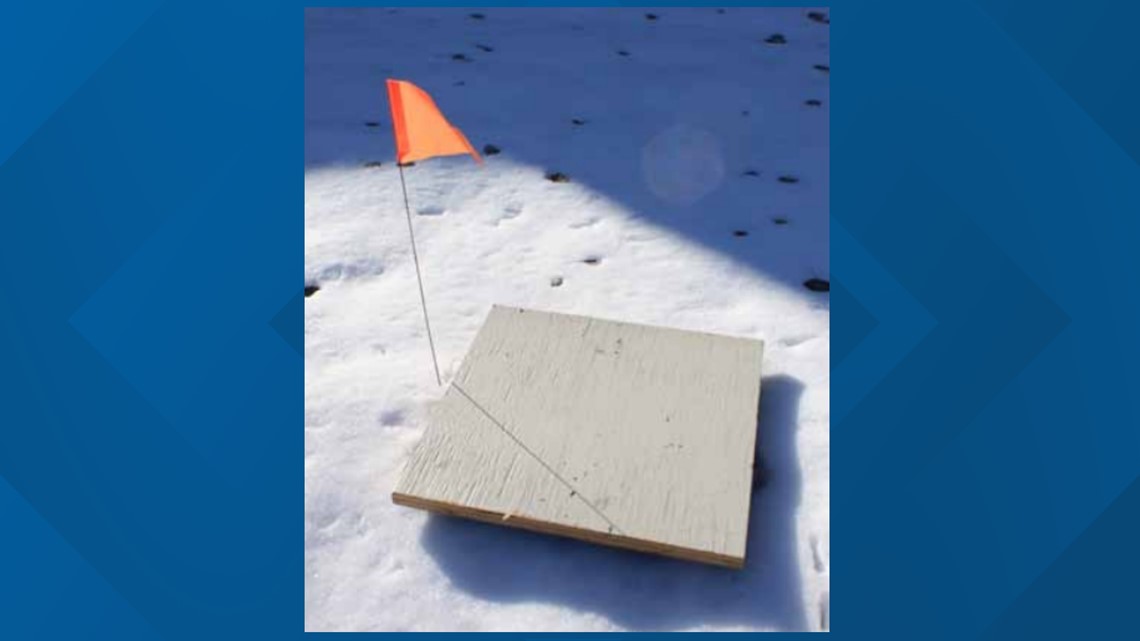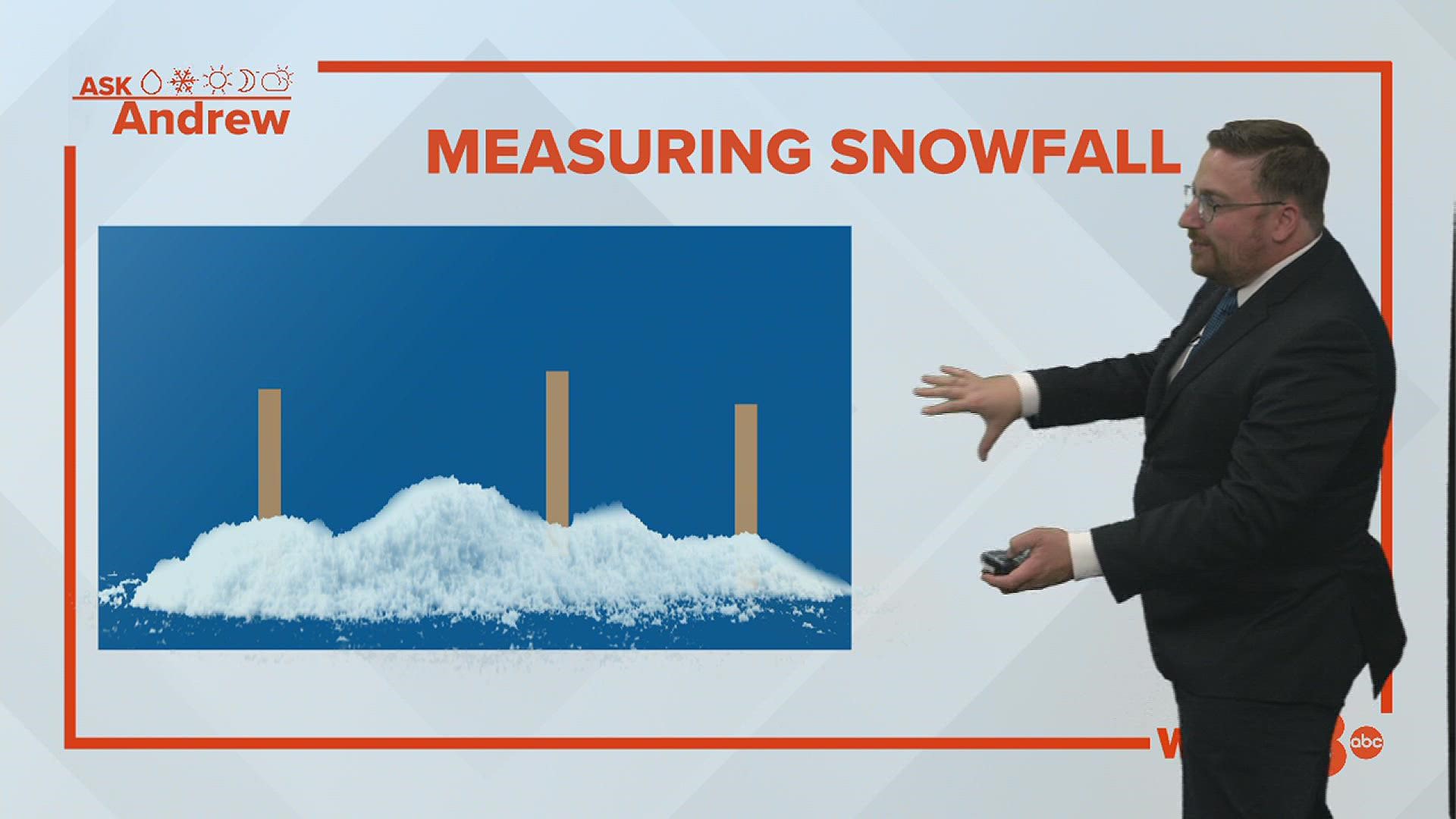MOLINE, Ill. — Many of us are familiar with rain gauges. We've even talked about how they measure rain when the wind is strong! The plastic or glass tubes that collect rainfall give us an idea of how much moisture a certain area received, but what about snowfall? Did you know that unlike rainfall there is no automated way of measuring snowfall? That's one of the many reasons why your snowfall reports are so crucial after a winter storm. Your reports actually help meteorologists decode winter storm systems and even help emergency managers prepare the cleanup afterward!
So, now that you know why this data is so important, how do you go about measuring it? It's not as simple as just sticking a ruler in a snowbank. There's a bit more to it. The accuracy of your snowfall measurements will really depend on how much work you want to put into the setup. I'll break this down into two pieces.


Taking basic measurements
To keep things simple, we will limit the preparation of this method and focus more on the measurement side. You've got some snow on the ground and you're ready to measure. Where do you start?
- Pick a place that is in the open, away from buildings, trees and anything else that could impact where snow would fall.
- When measuring, stick to the same base surface. For example, if you measure in one spot that is a grassy area, measure in another spot that also has a grassy base.
- Avoid measuring large, drifted areas. You want an area that is fairly level.
- Take three measurements, and then take the average of those three to reach your final measurement.
Taking advanced, more accurate measurements
First, we need to establish a literal base, on which the snow will fall on. Snowboards can be made with all different kinds of materials, including plywood and even styrofoam. Essentially, any kind of white surface will do. We want the color white because it reflects heat. Otherwise, the snow would melt upon impact and you wouldn't get an accurate measurement.


Place your snowboard in an open area, away from trees, buildings and any other obstructions. Make sure it is secured to the ground so it doesn't blow away or move easily in the wind. You'll also want to stick something like a small flag or another object near the snowboard so you know where it is when the snow begins to bury it. Same as above, you'll take three measurements across the board and then take the average to get your final measurement.
During longer snowfall events, you can choose to either clean the board after each measurement or keep the total ongoing. Your choice!
How and when to report what you've got
We value your weather reports! You can report your snowfall to us by using the News 8 app and submitting a photo. You can also use the Storm Track 8 App as well. Of course, if you don't have either of those, a simple email to wqad-meteorologists@wqad.com will also do the trick!
The National Weather Service in the Quad Cities also appreciates snowfall reports. You can report those, here.
What to report:
- How much snow fell (to the nearest tenth of an inch) 2.5" For example
- How long did the snowfall? One hour? Or 30 minutes?
- Was your snowfall measurement estimated or measured using one of the techniques above?
When to report:
-Your choice! Typically reports are appreciated as the event is ongoing. Reports around 4 pm in the evening and later in the evening are usually good times. You can also report first thing in the morning, usually by 6 or 7 am. You won't want to wait too long, though. Snow often compacts after falling. So, measure frequently!
Have a question you would like me to answer for an upcoming "Ask Andrew" segment? Submit it, here.

